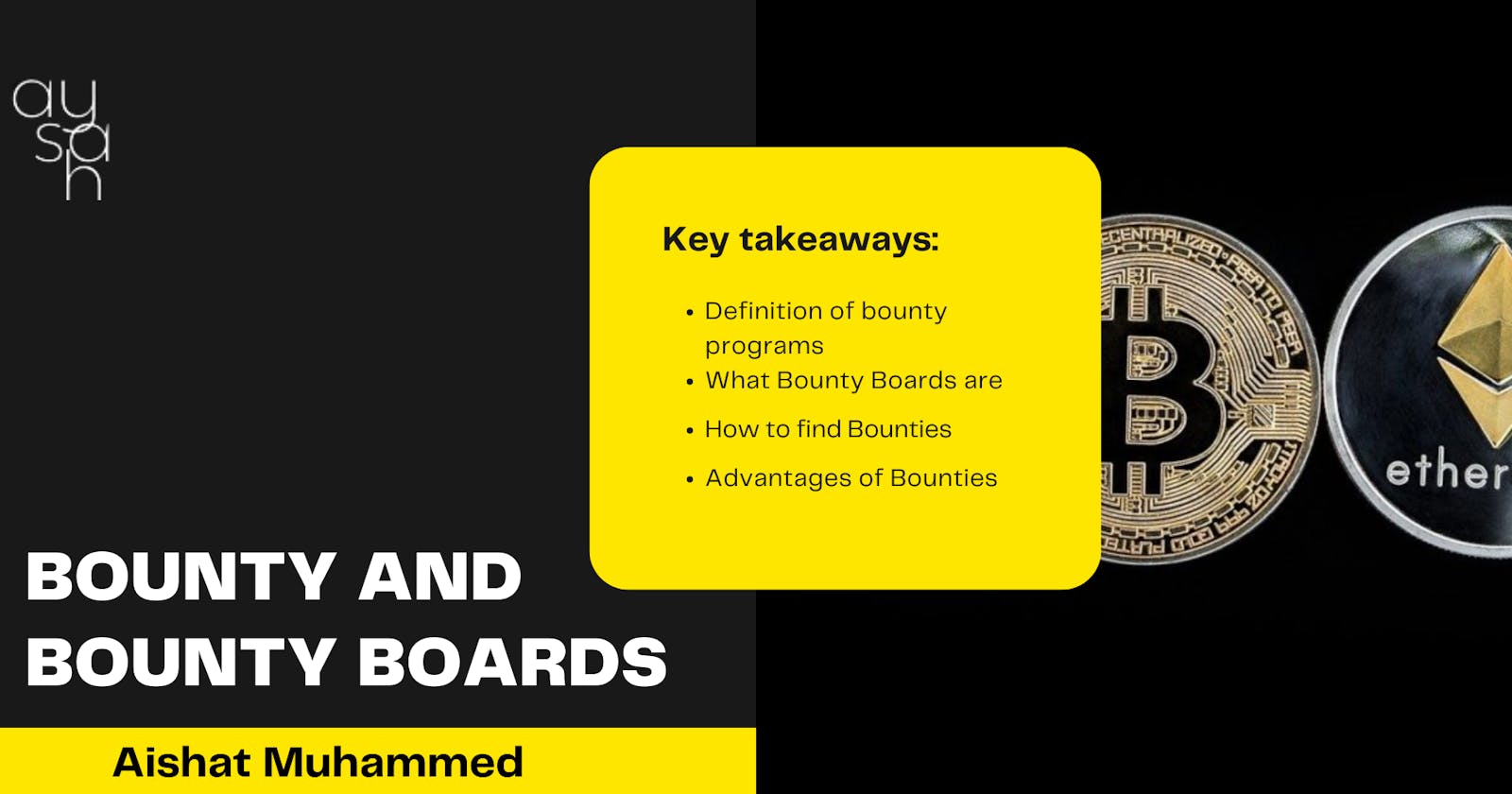Table of contents
My curiosity and desire to learn more about Web3 led me to bounty. When I first began researching Web3, I had no idea it would contain so many concepts; all I wanted to know was why there was so much buzz about it. To put it briefly, I discovered that Web3 is an evolution of the world wide web in general that includes several concepts, technologies, and activities. One of these several activities is the bounty program.
In this article, I will discuss bounty programs and what bounty boards are. Before I begin, if you are unfamiliar with Web3, you can learn more about it in my previous article, which I simplified for beginners and Web3 enthusiasts.
To begin, bounty programs are similar to freelancing. We've seen websites like Upwork and Fiverr where freelancing is the norm in the Web2 world. People use this website to find gigs, complete them, and get paid. To begin the freelancing process, you must first register your information on these websites, as you will need to verify your identity regardless of how skilled or competent you are before beginning this gig, which sometimes leads to profiling.
Profiling is an issue that some Web2 website users are experiencing. When people from certain countries indicate their country in their profile, they have a harder time getting gigs. This is due to either bad news about the country or the country's crime rate being reported.
The Web3 bounty can help to solve this problem to some extent, but the big question is, what exactly are bounties?
Bounties
According to Wikipedia, a bounty is an amount of money or other reward offered by an organization for a specific task done with a person or thing. In Web3, a bounty is a prize for finishing a task.
Bounty programs are now common and have become part of the workplace culture. Bounty hunters are people who look for bounty programs and use their skills to provide services to these programs in exchange for token rewards.
If you have the skill, bounty programs provide an endless opportunity for anyone, regardless of gender or nationality, to begin working anonymously in Web3. The rewards are determined solely by your abilities.
Allow me to digress a bit: when I said that bounty programs could be a solution to the problem of profiling in Web 2, I wasn't mistaken. However, there is one thing I'd like you to know: bounty programs were created to allow web3 developers and experts to work on other web3 projects, not to stop profiling.
Now back to bounty programs: projects like DAOs, NFTs, and Defi are just a few of the projects that benefit from bounty programs. Furthermore, not all of these projects can support a full-time developer, designer, content writer, social media manager, or community manager.
As a result, bounty programs have become a way for these projects to obtain the necessary talents without incurring the cost and risk of a full-time hire.
Bounty programs have also been made available for skilled individuals to truly contribute at the forefront of Web 3, earn while remaining free, and not report to anyone. It has also evolved into a low-risk learning curve for those looking to transition from Web2 to Web3.
Bounties and freelancing are similar, but in Web3, you do not need to verify your identity because rewards are given based on task completion. This is entirely dependent on your abilities. Now, do you see how Web3 Bounties can help with Web2 freelancing profiling? Anyway, let's check out the different types of bounties.
Type of bounties and how they work
Working on bounty programs, earning tokens from them, and learning from them is great, but finding the right bounties and understanding how they work is even better, so you can start solving and earning.
Starting and completing a bounty begins with finding them and selecting the one that best suits your skill. There are several types of bounties to choose from, some of which are as follows:
Bug Bounties: This bounty allows developers and researchers to look for bugs in an unreleased project. Developers and researchers look for bugs and are compensated for each one they find. Bounties are rewarded in the form of the project's tokens such as ETH, stablecoins such as USDC, or other ERC-20 tokens.
Smart Contract Bounties: Smart contract code is made available for developers to review and identify flaws. These organizations have decided on the type of token that will be used to reward bounty hunters. Following the completion of the bounty, the organization rewards bounty hunters with the specified token.
Social media Bounties: Organizations looking to market themselves use influence marketing in web3 through bounties. Bounty hunters who are skilled and specialized in web-based marketing are asked to make some social media posts to raise awareness about an unreleased project and are rewarded when the bounty task is completed.
Writing Bounties: These bounty programs enable Web3 technical writers to write documentation for organizations about their projects and what the organization does, and they are also rewarded for completing these tasks.
##** Bounty Board**
Bounties are available all over the internet, but the best place to start is with a bounty board, which contains a compiled list of bounty offers from various project owners. In this article, I'll use the Chainwizz bounty board to demonstrate how bounty boards work and how they make hunting for bounties easier.
The Chainwizz bounty board connects organizations and bounty hunters on the chainwizz bounty board platform. Bounties are listed for every skill level, from writing to development to design, and so on. The bounty hunter only needs to connect their wallet, choose a bounty in which they are skilled, and begin solving to earn rewards.
STEPS TO SOLVING A BOUNTY ON CHAINWIZZ
There are steps to solving a bounty on the Chainwizz platform as a bounty hunter; the steps are listed below:
1- Navigate to chainwhiz.app which is the chainwizz bounty board. Click on the Lauch app
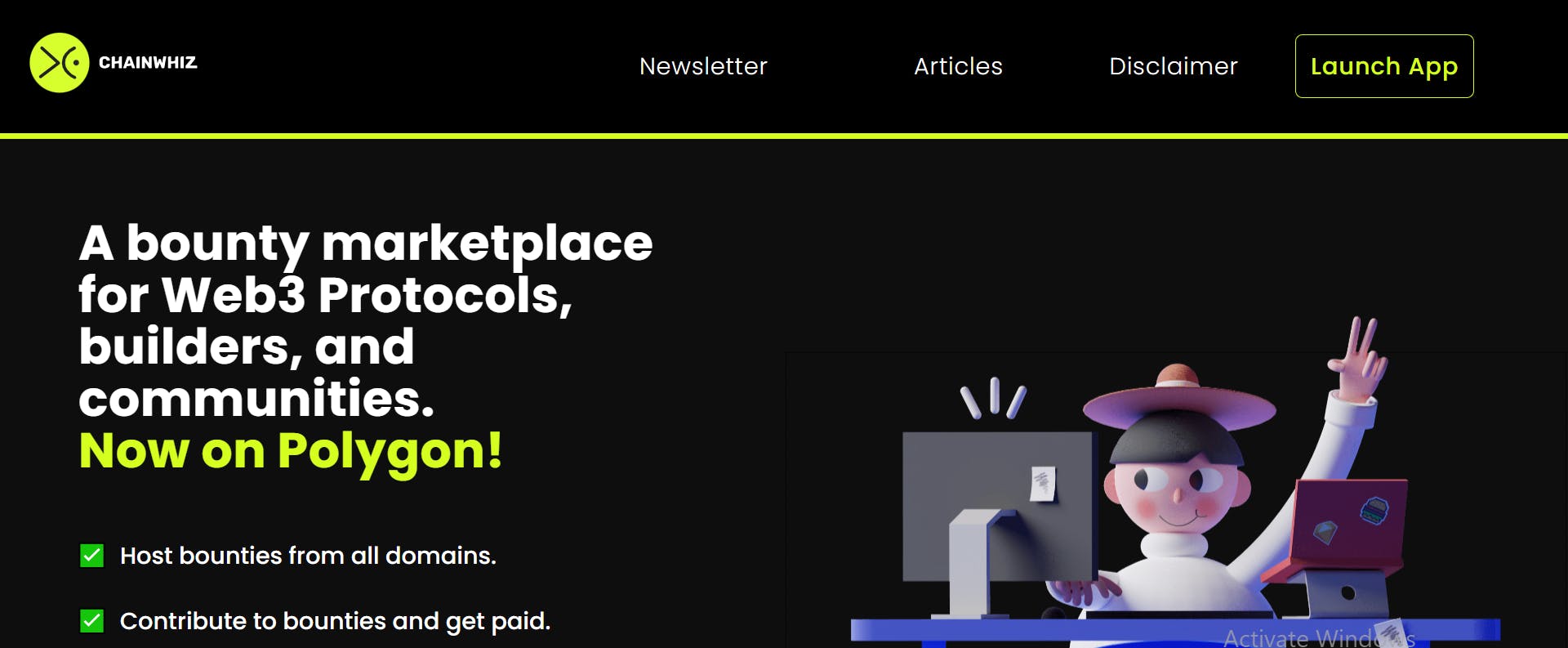
2- Click on Connect Wallet to connect your cryptocurrency wallet for receiving your rewards after bounty completion.
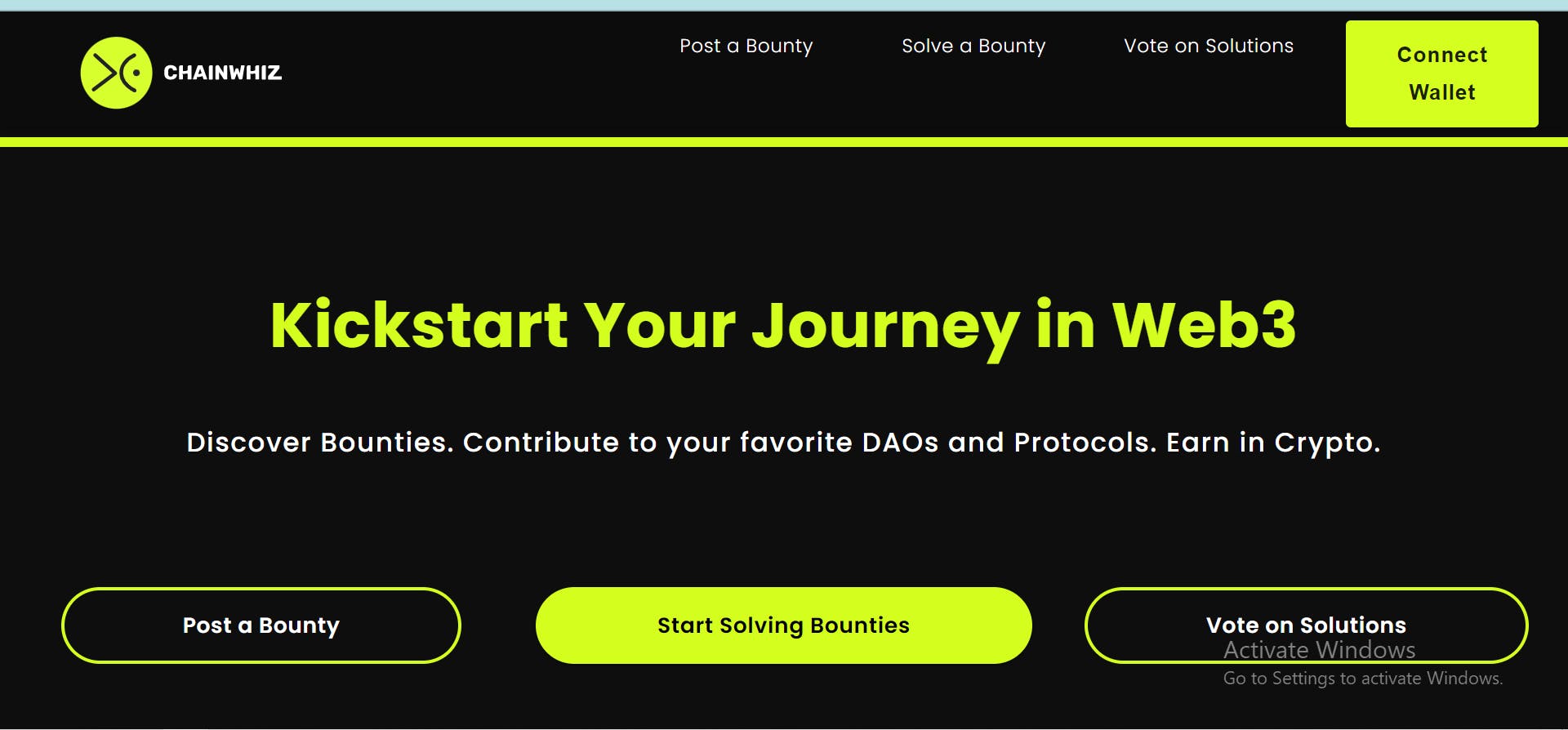
3- Click on Start solving bounty to see the list of available bounties on the bounty board
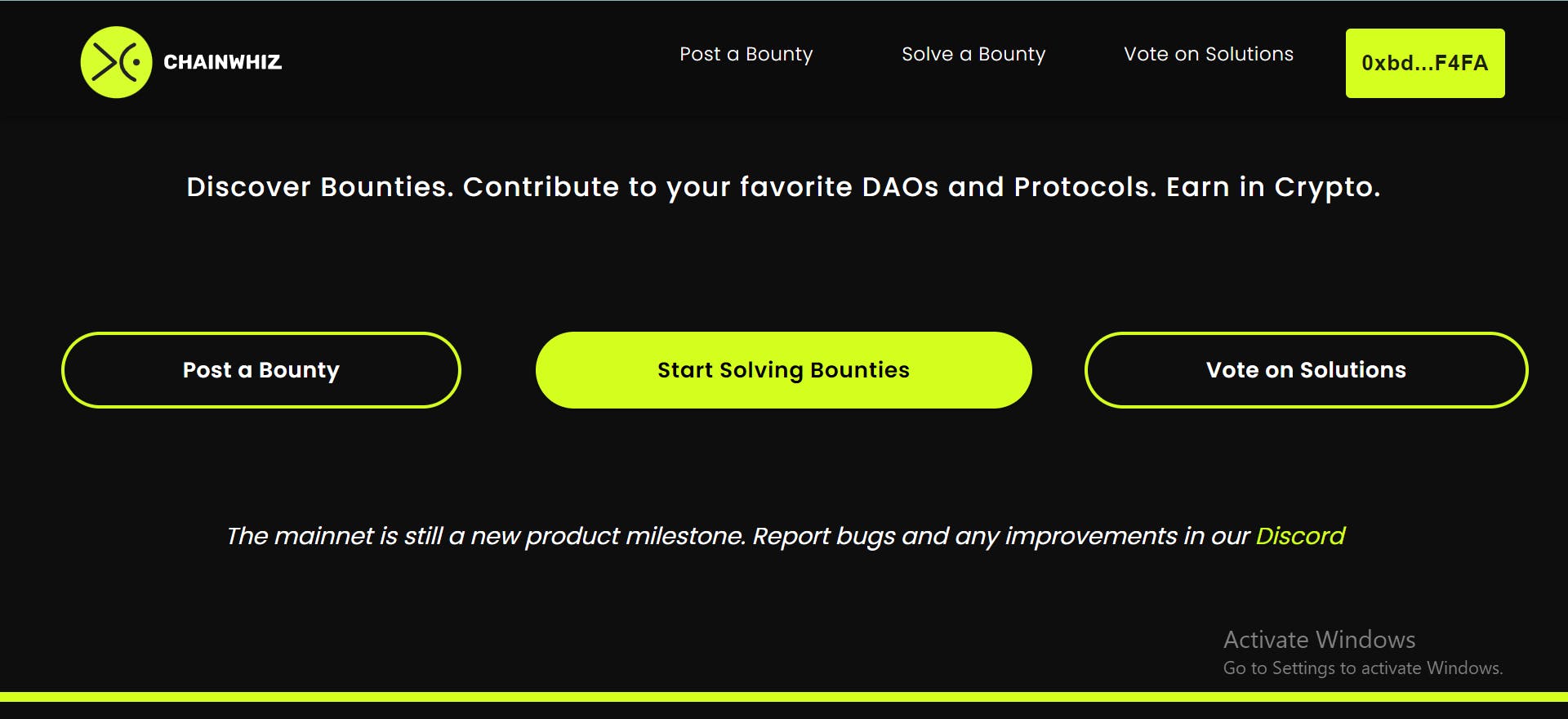
4- Select a bounty you are skilled at solving, then click on upskill to see additional info about the bounty and its time frame.
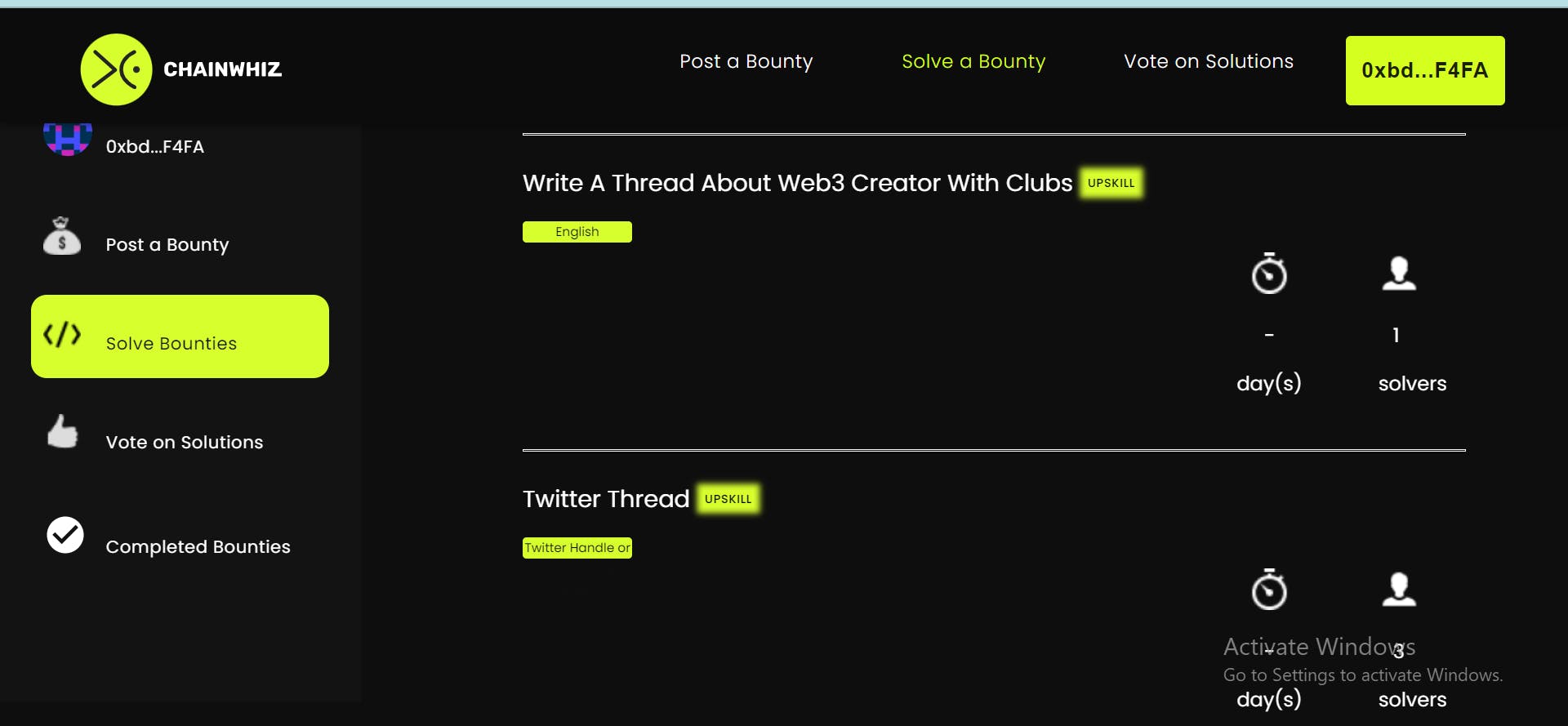
5- Click on submit after you solve the bounty and patiently await your reward.
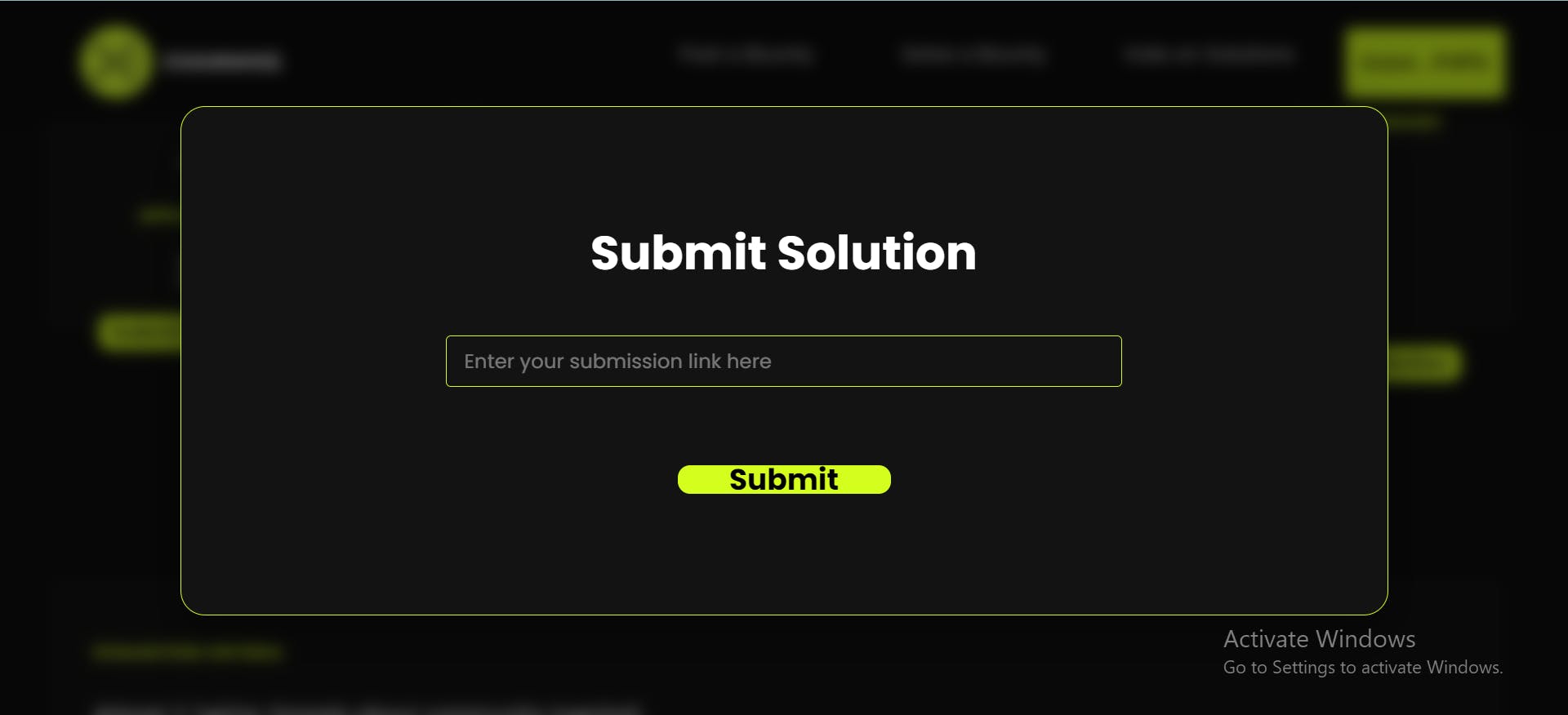
Organizations can use the chainwizz platform to also post their project bounties, all they have to do is
1- click on "post a bounty", and fill in the details of the bounty while clicking on next for the next details till all details about the bounty have been filled.
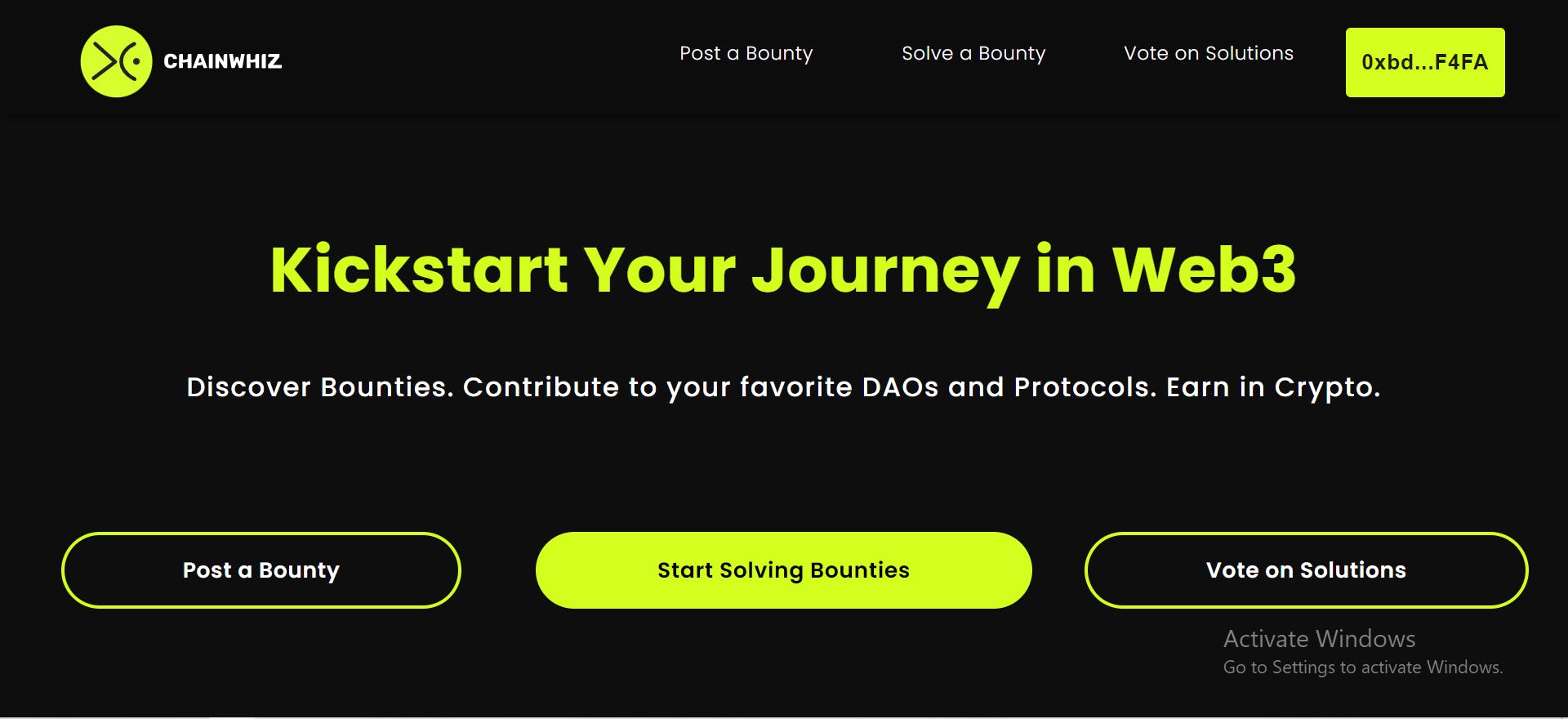
2- Click on Publish after all details has been filled to the end.
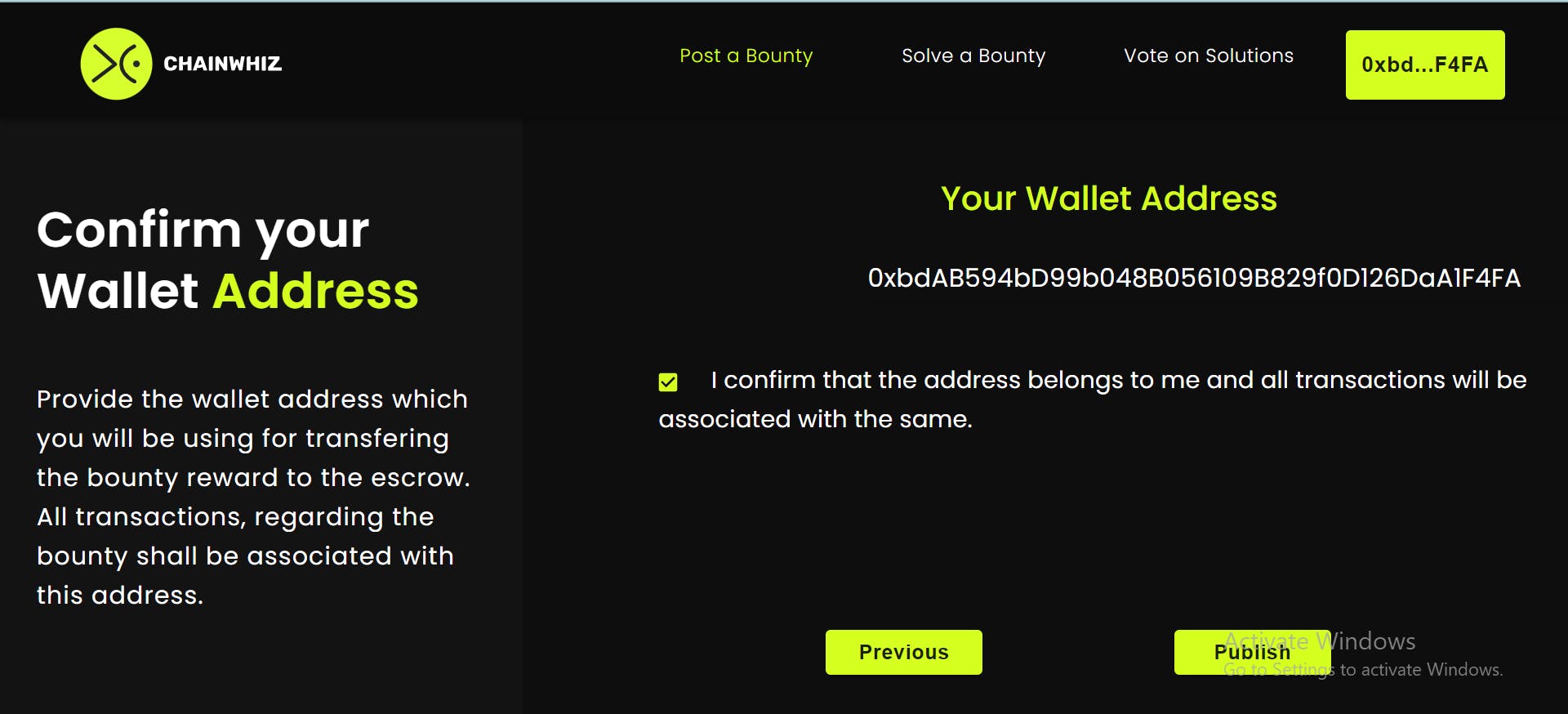
Aside from the chainwizz bounty platform, there are other bounty platform such as
Dework Bounty Board
Bankless DAO Bounty Board
Layer3 Bounty Board
and so on.
Summary
Bounties are web3 tasks that can be obtained through bounty boards. Using Web3 decentralization technology, bounty hunters can begin earning tokens after completing bounties related to a project or organization.
Bounty programs, among other things, can help web3 developers and experts upskill, build their portfolio, avoid profiling, build credibility, and earn tokens.
Bounty hunters must first visit a bounty board, select a bounty that matches their skill and talent, and then begin earning. Bounty boards are widely available on the Internet. Furthermore, bounty hunters must have their wallets and wallet addresses available to complete a bounty.
Conclusion
We have arrived at the end of this article; if you have made it this far, it means you have thoroughly enjoyed learning about bounties.
See you in my next post! bye.
